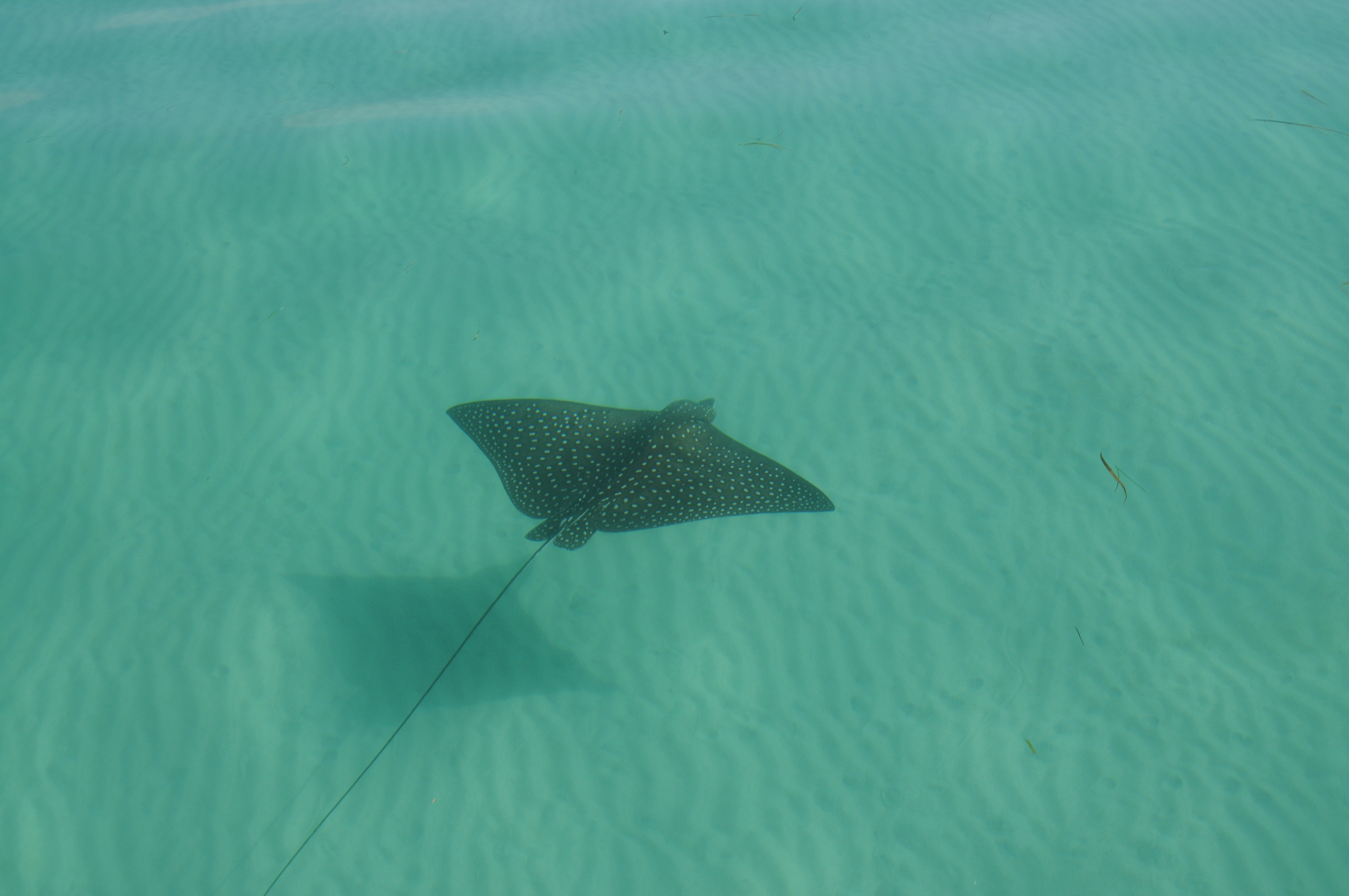Uncovering Spotted Eagle Ray Migrations Along Florida’s Coastlines
A new study is providing insights into the mysterious migrations of whitespotted eagle rays — uncovering interesting differences in the movements of rays along Florida’s east and west coasts and providing important information for species conservation.
The whitespotted eagle ray (Aetobatus narinari) is protected in Florida, but there is little information about its habitat use and migratory patterns. This new study “Variable migration patterns of whitespotted eagle rays, Aetobatus narinari, along Florida’s Coastlines,” published in the journal Marine Biology is helping to change that.
From 2016 through 2018, researchers from Florida Atlantic University’s Harbor Branch Research Institute, Mote Marine Laboratory, the Chicago Zoological Society’s Sarasota Dolphin Research Program, the University of Florida, and Florida’s Fish and Wildlife Conservation Commission along with its Research Institute, tagged 54 rays with acoustic transmitters and tracked them using telemetry networks (iTAG and FACT) along Florida’s Gulf coast and east coast, including in the Indian River Lagoon.
This map shows the location of acoustic receivers where tagged whitespotted eagle rays (Aetobatus narinari) were detected within the collaborative acoustic telemetry networks iTAG and FACT. Receivers were grouped by 1° latitude as represented by unique colors. The receivers in Sarasota and Sebastian, where the majority of A. narinari were captured and tagged are bracketed.
From 2016 through 2018, researchers from Florida Atlantic University’s Harbor Branch Research Institute, Mote Marine Laboratory, the Chicago Zoological Society’s Sarasota Dolphin Research Program, the University of Florida, and Florida’s Fish and Wildlife Conservation Commission along with its Research Institute, tagged 54 rays with acoustic transmitters and tracked them using telemetry networks (iTAG and FACT) along Florida’s Gulf coast and east coast, including in the Indian River Lagoon.
Detections of tagged rays indicate that the west coast rays migrated north and south, likely cued by seasonal changes in water temperature while the east coast rays remained resident in and around the Indian River Lagoon, with the youngest rays spending the most time in the lagoon.
This study is the first to provide multi-year information on the distribution and movement of the species and could help in crafting strategies for protection that is specific to different areas of its range. For instance, the rays in the Indian River Lagoon are subjected to various human-induced environmental changes that impact the quality of their habitat.
The study also suggests that the rays living in the Lagoon could be a sub-population.

Video caption/Credit: Video shows an Atlantic coast eagle ray in Florida’s Indian River Lagoon. (Video credit: Cameron Luck)
The lead author was Breanna DeGroot, of Florida Atlantic University’s Harbor Branch Research Institute. Co-authors included Kim Bassos-Hull, with the Sarasota Dolphin Research Program and Mote Marine Laboratory; Krystan Wilkinson, with the Sarasota Dolphin Research Program; Susan Lowerre-Barbieri, with the University of Florida and the Florida Fish and Wildlife Conservation Commission; Gregg Poulakis with the Florida Fish and Wildlife Conservation Commission and Matt Ajemian, with FAU’s Harbor Branch Research Institute.
- Read the full study: https://doi.org/10.1007/s00227-021-03821-2
- Citation: DeGroot, B.C., K. Bassos-Hull, K.A. Wilkinson, S. Lowerri-Barbieri, G.R. Poulakis, M.J. Ajemian. 2021. Variable migration patterns of whitespotted eagle rays, Aetobatus narinari, along Florida’s Coastlines. Marine Biology 168:18.
This study was supported by the Guy Harvey Ocean Foundation, Vero Beach Rotary Club, Indian River Graduate Research Fellowship (2017, 2018) 3-min Thesis Award, Save Our Seas specialty license plate fund administered by the Harbor Branch Oceanographic Institute Foundation, the Mote Scientific Foundation, Georgia Aquarium, and the NOAA-NMFS Species Recovery Grants to States (Section 6 Program). All applicable institutional guidelines for the care and use of animals were followed. Animals were acoustically tagged using university-approved animal use protocols (Gulf coast, Mote AUP #17-11-PH1; Atlantic coast, FAU AUP #A16-16) and handling permits (Gulf coast, FWC SAL-16-1140-SRP; Atlantic coast, FWC SAL-16-1785-SRP).





